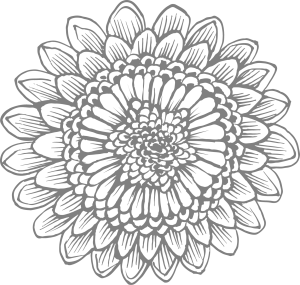SANTA CROCE DI MAGLIANO
The feast of the patron saint, St Anthony, takes place on the 13th of June, preceded the previous day by a procession out of the old town towards a chapel where floats carry the statue of the saint.
The floats that parade are pulled by oxen or cows, they are all of the so-called ‘barrel’ shape, covered with white sheets and crocheted blankets, finely decorated with crepe paper flowers and bows, the icon of the Saint and the Infant Jesus. The floats are decorated with olive branches, a sign of the area’s most characteristic crop and its predominant agricultural vocation. These plant decorations are also considered an auspicious sign for the harvest and the year that opens with the renovatio represented by the festival.
Animals play a crucial role in the ceremonial, in a form that the community defines as cooperation (“animals help us celebrate our Saint”). These animals are respected and honoured as an integral part of the sacred ceremonial and the care that goes into their preparation in the preceding months is a sign of special attention to their welfare and the building of a relationship of understanding and mutual comprehension with those who will handle them. This activity often starts in March and lasts up to 8 weeks.
The festival, as tradition dictates, is also experienced at the table, even if there are no real typical dishes: lunch on 13 June is eaten in the houses or on the street estates of the families who own the carts. It is an abundant and rich lunch, very varied and with abundant libations.
The soundscape of the festival is enriched by the song of the Carregna: a song accompanied by the sound of the thick accordion, monodic and modular in character, which praises the patron saint. There is a strong sonorous presence of bells as well as the bellowing of animals and the shuffling of cattle hooves. The procession ends in a large square where an auction is held of the goods, generally agricultural and pastoral, collected in the preceding weeks during the questing activities that precede and prepare the ceremonies in honour of St Anthony.

VIDEO
IMAGE GALLERY


S. CROCE DI MAGLIANO
The feast of the patron saint, St Anthony, takes place on the 13th of June, preceded the previous day by a procession out of the old town towards a chapel where floats carry the statue of the saint.
The floats that parade are pulled by oxen or cows, they are all of the so-called ‘barrel’ shape, covered with white sheets and crocheted blankets, finely decorated with crepe paper flowers and bows, the icon of the Saint and the Infant Jesus. The floats are decorated with olive branches, a sign of the area’s most characteristic crop and its predominant agricultural vocation. These plant decorations are also considered an auspicious sign for the harvest and the year that opens with the renovatio represented by the festival.
Animals play a crucial role in the ceremonial, in a form that the community defines as cooperation (“animals help us celebrate our Saint”). These animals are respected and honoured as an integral part of the sacred ceremonial and the care that goes into their preparation in the preceding months is a sign of special attention to their welfare and the building of a relationship of understanding and mutual comprehension with those who will handle them. This activity, which often starts in March and lasts up to 8 weeks,
The festival, as tradition dictates, is also experienced at the table, even if there are no real typical dishes: lunch on 13 June is eaten in the houses or on the street estates of the families who own the carts. It is an abundant and rich lunch, very varied and with abundant libations.
The soundscape of the festival is enriched by the song of the Carregna: a song accompanied by the sound of the thick accordion, monodic and modular in character, which praises the patron saint. There is a strong sonorous presence of bells as well as the bellowing of animals and the shuffling of cattle hooves. The procession ends in a large square where an auction is held of the goods, generally agricultural and pastoral, collected in the preceding weeks during the questing activities that precede and prepare the ceremonies in honour of St Anthony.
VIDEO
IMAGE GALLERY